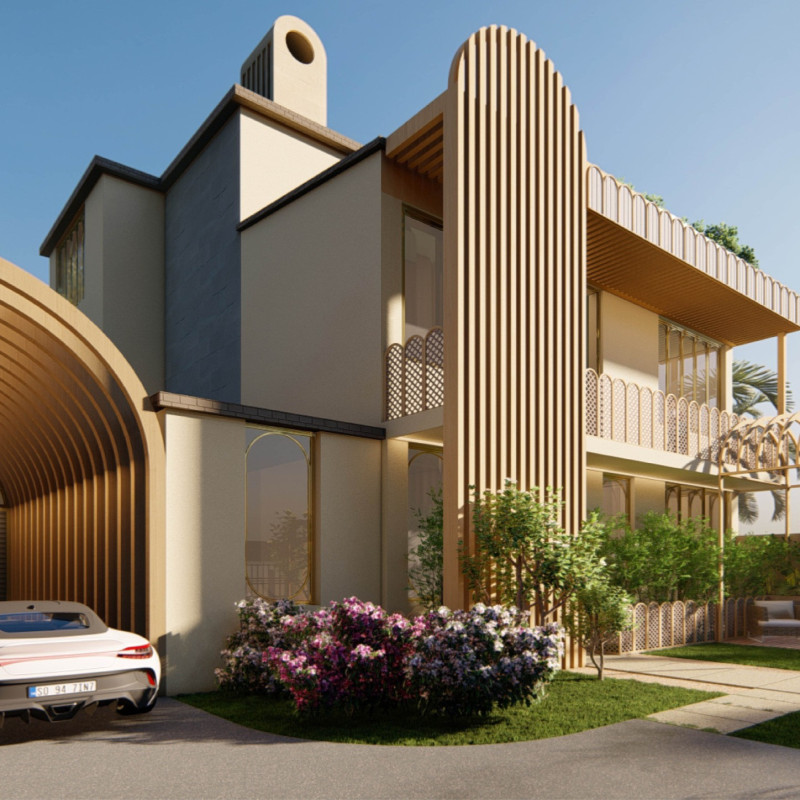5 key facts about this project
The function of the project is multifaceted, encompassing residential, communal, and recreational spaces that encourage engagement between individuals and their surroundings. The design prioritizes user experience, incorporating open layouts that promote natural flow and accessibility. The careful arrangement of spaces creates opportunities for collaboration and socialization, contributing to a sense of community within the building. This inclusivity is further enhanced by strategically located common areas such as lounges, gardens, and meeting spaces, each designed to be inviting and functional.
One of the standout features of the project is its attention to materiality. The architects made deliberate choices in selecting materials that not only align with the visual language of the design but also respond to environmental factors. Concrete provides a solid foundation, while expansive glass elements are employed to create a seamless transition between indoor and outdoor environments. The use of wood adds warmth and texture, subtly reflecting the surrounding landscape. Metal elements offer durability and a contemporary aesthetic, enhancing the building's appeal. Additionally, the choice of local stone for facade treatments not only roots the project in its location but contributes to sustainability efforts through reduced transportation impacts.
The architectural design adopts a unique approach to sustainability, integrating eco-friendly practices throughout the project. Natural light takes precedence in the design, with large windows and strategically placed overhangs that reduce reliance on artificial lighting. The architects implemented passive solar principles that capitalize on the sun’s position, allowing for natural heating and cooling, thus promoting energy efficiency. Furthermore, systems for rainwater harvesting demonstrate a commitment to resource management and environmental responsibility, encouraging occupants to engage with sustainable practices.
Special attention is also paid to the integration of the building within its site. The landscape architecture complements the structure's aesthetics while enhancing its connectivity with the surrounding environment. Paths, gardens, and outdoor seating areas are deliberately sited to encourage exploration and connection with nature, enhancing the overall quality of life for residents and visitors alike.
The project challenges conventional architectural norms by fostering a dialogue between the built environment and the broader ecological context. This interaction creates pockets of tranquility and promotes biodiversity through native landscaping, which adds aesthetic value while supporting local wildlife. The design embodies a philosophy that prioritizes a balanced relationship between architecture and its environment, exemplifying how thoughtful planning can positively influence community dynamics.
In summary, this architectural project stands as a well-considered example of modern design that captures the essence of its location while addressing the needs of its community. It offers a clear representation of how architecture can serve as a catalyst for social interaction and environmental awareness. For those interested in further exploring this project, the architectural plans, sections, and diverse design elements are available for review, offering deeper insights into the thoughtful ideas that shape this remarkable space.


 Pol Martin Gallagher
Pol Martin Gallagher 























